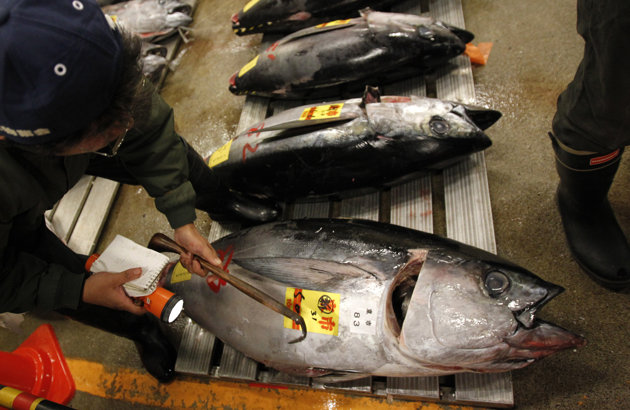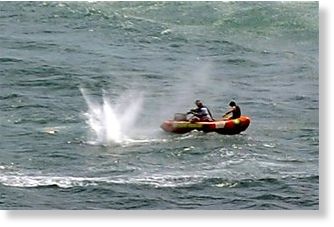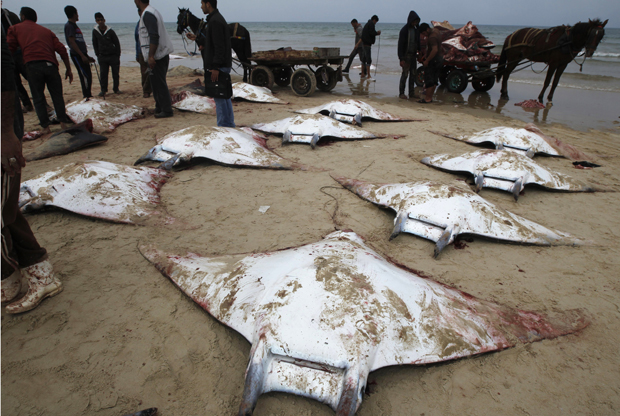OF THE
TIMES



None of those possibilities, however, seems to explain what happened to these fish, shown being transported by fisherman to the marketplace.Manta rays are subject to a number of other anthropogenic threats. Because mantas must swim constantly in order to flush oxygen-rich water over their gills, they are vulnerable to entanglement and subsequent suffocation. Mantas cannot swim backwards and, because of their protruding cephalic fins, they are prone to being caught in trailing fishing lines, nets and even loose mooring lines. When caught, mantas will often attempt to free themselves by somersaulting, tangling themselves further. It is possible for a loose, trailing line to wrap round and cut its way into a fleshy appendage, resulting in an irreversible injury such as the loss of a cephalic fin or damage to a pectoral fin, or even death if the wound is severe enough.
Comment: And to learn more about the Bible and true history of human kind, read Comets and the Horns of Moses by Laura Knight-Jadczyk